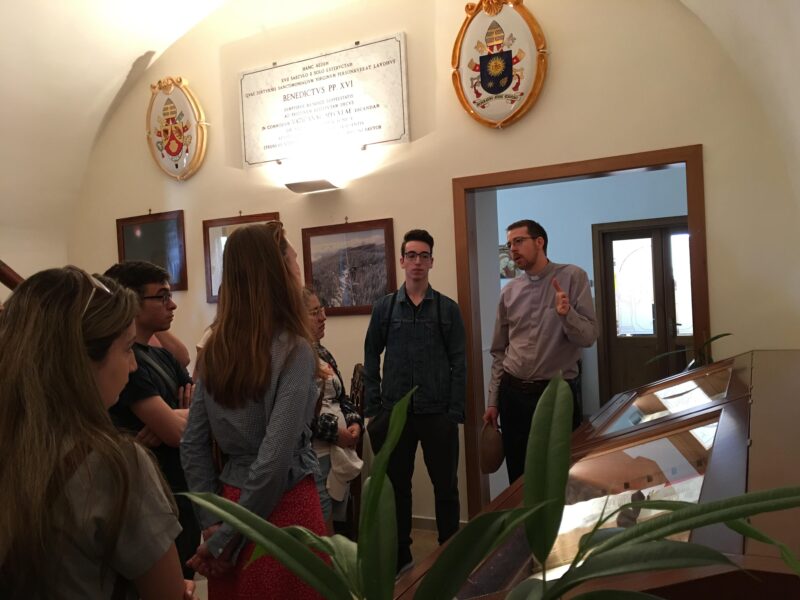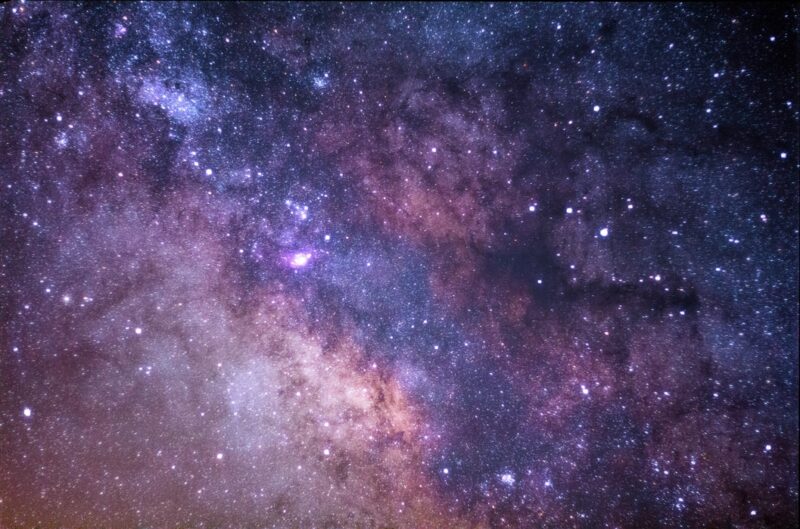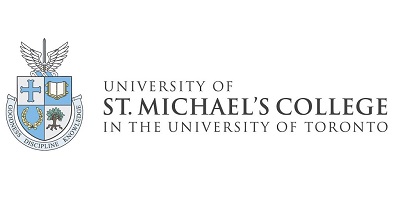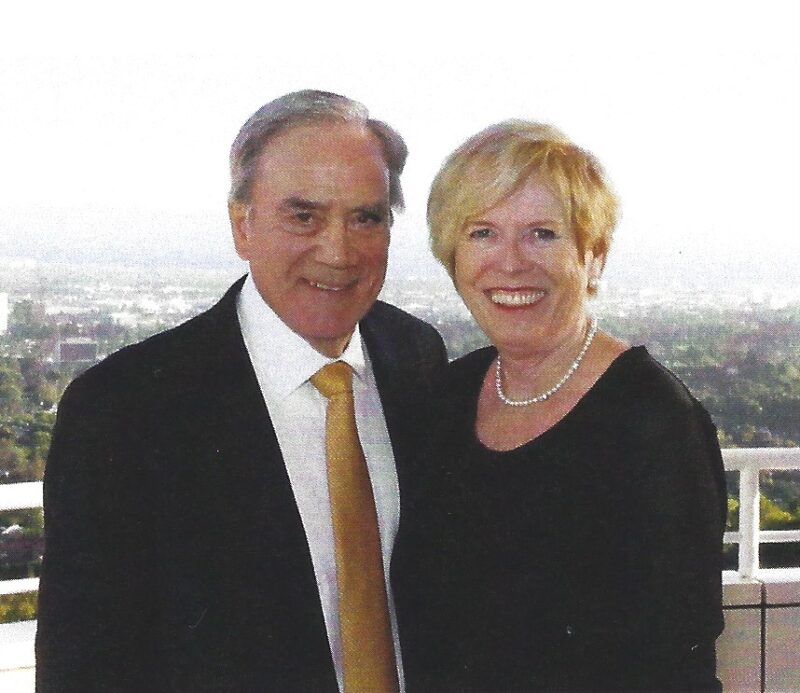Jean-Olivier Richard is Assistant Professor, Teaching Stream, in the Christianity and Culture Program. A historian of science by training, his research and teaching interests include the relationship natural philosophy with Christianity with science in the early modern era, Jesuit history, environmental history, and the history of alchemy, astrology, and magic.
Night Sky and Quietude
On June 17, I decided to set up a tent in the backyard of my partner’s parents, thereby adding a room to what was beginning to feel like a crowded house. My girlfriend and I brought mattresses, pillows, sleeping bags, and munchies. I also decided to install my Meade ETX 90, a reflecting telescope I had purchased a couple years ago and neglected to use since. I figured that on a clear night in Ottawa’s suburbs, it would find better use than in dazzling Toronto.
Around 3 a.m., we woke up to a starry sky, with Vega and Arcturus above our heads and a handful of planets lined up within the narrow band of the Zodiac. In the south, majestic Jupiter lorded at its zenith in conjunction with Saturn. Red Mars was lagging further to the East, next to Neptune, invisible. The waning crescent Moon, with Venus by its side, had yet to rise. Over the next two hours, we turned the telescope to each of these celestial bodies, trying different lenses and observing with childlike excitement. My girlfriend saw, for the first time, Jupiter’s four largest satellites—the same Galileo discovered with his spyglass in 1610—as well as hints of the giant’s darker belts. Even more delightful, to both of us, were Saturn’s rings, which we could see distinctly, like a pair of bright handles. Then, just before dawn, the ancient Moon’s familiar wink was made unfamiliar. Next to its shadowed face, Venus was showing its crescent. At that point, our excitement had ceded place to a kind of contemplative wonder, mixed with serenity and sunlight. With our naked eyes, we had observed and experienced what astronomers of old described as the wheeling of the celestial spheres around Polaris, the axis of the world. It was a wakeful night well spent.
Over the next couple of days, my mind was busy pondering Plato’s Timaeus, a speculative account of the creation the universe I teach in some of my Christianity and science courses. Therein Plato argues that the cosmos was made by the Demiurge, a divine, benevolent craftsman who ordered his materials mathematically and beautifully, in the likeness of eternal, unchanging forms. The Demiurge not only created the gods (including the planets) but also individual souls (each one tied to a guardian star), whose bodies He let the lesser deities shape from imperfect matter. Plato teaches that our souls, trapped as they are in their fleshy shells, tend to be confused and disorderly, having lost sight, from the moment of their birth, of the divine harmonies from whence they come. For Plato, contemplation of the wheeling stars—and by extension, the study of mathematical proportions—is the best way to quell our inner disturbances and to restore our quietude. Failing to do so is to risk losing clarity of mind, to condemn the soul to reincarnate in critters less suited for philosophy than human beings: birds, brutes, or—God forbid—fish!
For sure, contemplating the heavens was not a source of excitement for Plato in the way it can be to city dwellers today, but it was just as salutary. Plato’s great insight was that education is transformative: we become what we study, and we must therefore be mindful of our intellectual diet. In trying times, when we feel trapped in our heads and in our houses, it pays to look up, and emulate the stars.
Read other InsightOut posts.
June 24, 2020
The University of St. Michael’s College and The University of Toronto Faculty of Arts & Science are pleased to announce that astrophysicist Dr. Adam Hincks, S.J., will be the inaugural holder of the Sutton Family Chair in Science, Christianity and Cultures. The position, jointly supported by Arts & Science and an endowment to St. Michael’s from alumni members Dr. Marilyn and Thomas Sutton, will make a significant contribution to the body of scholarship on the intersection of these three key fields.
Alumni and generous donors to St. Michael’s, the Suttons have long envisioned a position dedicated to examining how Christianity, science and cultures interact and intertwine.
“Marilyn and I are pleased to make this gift of gratitude in support of the distinctive partnership of USMC (St. Michael’s) and U of T. Our education in the Humanities at USMC and Math and Physics at UofT gave us a strong foundation for further education and our professions,” says Mr. Sutton.
The Suttons have found in their own studies that exciting knowledge is found in the spaces between disciplines. The Sutton Family Chair will offer a distinctive opportunity to advance such understanding.
“The inquiries of Science, Christianity and Cultures are informed by intersecting strands of scholarship. This Chair will provide a locus for focused study of those intersections and facilitate the development of new knowledge,” Dr. Sutton says.
Dr. Hincks specializes in physical cosmology, which studies the evolution and overall structure of the universe. In 2004, he completed a B.Sc. in physics and astrophysics from U of T, while also earning the St. Michael’s College Gold Medal for the highest cumulative GPA in sciences for a graduating student. In 2009 he earned a Ph.D. in physics from Princeton University and then entered the Jesuit novitiate in Montréal. After pronouncing vows in 2011, he pursued philosophical studies at Toronto’s Regis College and later did a Bachelor of Sacred Theology at Rome’s Pontifical Gregorian University. Between these studies, from 2013 to 2015, he was a postdoctoral research fellow at the University of British Columbia. Most recently he has been completing a Master of Theology and Licentiate in Sacred Theology at Regis College. He was ordained to the priesthood in 2019.
“As an alumnus of St. Mike’s at the University of Toronto, where I did the undergraduate Astronomy and Physics specialist programme, I’m proud that my alma mater has created this creative position, and I’m delighted to be taking it up,” he says.

Among his various academic affiliations he is an associate scholar of the Vatican Observatory, while his research includes work with the Atacama Cosmology Telescope and the upcoming Simons Observatory, both located in Northern Chile, that are designed to answer fundamental questions about the history and structure of the Universe. In the past, he has also worked on the Canadian Hydrogen Intensity Mapping Experiment in British Columbia’s Okanagan Valley.
“I’m looking forward to continuing my scientific research in a context that also allows me to examine how it enters into conversation with Christianity and culture, both in the classroom and as a secondary research area,” Dr. Hincks explains.
“Dr. Hincks is a stellar addition to a growing group of very fine core faculty at St. Michael’s,” says Dr. Sylvester. “He reflects the caliber of research and teaching excellence St. Michael’s is providing to all University of Toronto students. Dr. Hincks’s work—especially in studying the interrelationships of Science and Christianity and their relationships to a variety of cultures—disproves the frequent assumption that science and religion have nothing positive to gain from encountering each other. We are very glad to welcome him home to St. Michael’s.”
Dr. Melanie Woodin, Dean of U of T’s Faculty of Arts & Science, agrees.
“The establishment of the Sutton Family Chair will advance research and teaching in multi-disciplinary ways that attest to the breadth and depth of the scholarship and learning that takes place in the Faculty of Arts and Science,” Dr. Woodin says. “I am delighted to recognize the generosity of U of T alumni and longtime supporters Tom and Marilyn Sutton. Their investment in this co-located Chair affirms the importance of creative and meaningful collaborations between the Faculty and one of its valued federated colleges, St. Michael’s.”
Dr. Hincks will begin his four-year appointment on July 1, 2020. The David A. Dunlap Department of Astronomy and Astrophysics will host Adam’s graduate appointment in the University of Toronto. In addition to teaching courses for the Department and also for the Christianity and Culture program sponsored by St. Michael’s College for students in the Faculty of Arts and Science, Adam will develop a course to be offered jointly for students in both programs, related to religion and science, in the time ahead.
Marilyn and Tom Sutton are graduates from St. Michael’s class of 1965. Marilyn graduated with a B.A. in English and French, completed a Phd at Claremont Graduate University and is Professor of English (Emerita) at California State University, Dominguez Hills. Tom graduated with a B.Sc. in Mathematics and Physics and is the retired chairman and CEO of Pacific Life Insurance Company.



